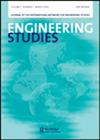为社会正义、种姓和新自由主义而战:《为iit而战:为精英政治辩护》书评
IF 1.3
3区 工程技术
Q2 EDUCATION, SCIENTIFIC DISCIPLINES
引用次数: 0
摘要
由拉吉夫·马尔霍特拉(Rajiv Malhotra)和维贾雅·维斯瓦纳坦(Vijaya Viswanathan)撰写的《为印度理工学院(IIT)的罪行辩护:为精英统治辩护》(Battle for IITs: a Defense of Meritocracy)于2023年出版,是一项新的贡献,以理论不一致、不科学的推理以及对印度景观中社会和经济压迫现实的恶性扭曲来捍卫印度理工学院(IIT)的罪行。这本书是在新德里国际书展上发布的,并作为“恒河之蛇:打破印度2.0”系列的一部分出版。这本书是对印度最负盛名的精英技术学院——印度理工学院(Indian Institute of Technologies)——的辩论的一个有争议的补充。坦率地说,作者指责印度理工学院的社会正义使命和反种姓叙事是破坏印度科学追求和削弱公民个人自由的力量。在印度理工学院之战中提出的令人愤慨的说法出现在2014年至2021年期间,精英工程学院有122名学生自杀这些学生中的大多数属于印度教种姓制度中的边缘种姓群体,即表列种姓(SC)、表列部落(ST)和其他落后社区(OBC)。这些群体受到法律保护,在公立教育机构中为他们保留一定比例的席位。最近印度理工学院孟买分校一名达利特理工学士(B.Tech)学生Darshan Solanki自杀的悲剧引发了一场全国性的辩论,讨论这些学院是如何在追求按性别和种姓划分和排斥学生的过程中变得凶残的,它们是全球化新自由主义经济结构的一个独特节点。《自然》杂志最近公布了通过《信息权法》(Right to Information Act)获得的关于印度精英工程学院学生组成的数据。数据显示,“印度的大学未能满足政府对印度边缘化社区的配额”。此外,他们还注意到,在较高的学术水平上,这一数字急剧下降。在印度理工学院,性别差异一直是人们关注的主要问题。即使在印度理工学院为女学生引入额外配额之后,在2018-2019年,印度理工学院的女性比例仍然只有20%马尔霍特拉和维斯瓦纳坦也试图为印度理工学院的性别差异辩护。他们认为本文章由计算机程序翻译,如有差异,请以英文原文为准。
Battles Over Social Justice, Caste, and Neo-Liberalism: A Review of ‘The Battle for IITs: A Defense of Meritocracy’
The Battle for IITs: a Defense of Meritocracy published in 2023, written by Rajiv Malhotra and Vijaya Viswanathan, is a new contribution to defend the crème de la crème of the Indian Institute(s) of Technology (IIT) with theoretical inconsistencies, unscientific reasoning, and a vicious bending of the reality of social and economic oppression in the Indian landscape. The bookwas launched at the International Book Fair, NewDelhi, andwas published as part of the series Snakes in the Ganga: Breaking India 2.0. The book is a controversial addition to the debate on India’s most prestigious and elite technical institutes: the Indian Institute of Technologies. Bleakly put, the authors accuse social justice missions and anti-caste narratives in the IITs as forces breaking India from its scientific pursuits and diminishing the individual liberty of citizens. The outrageous claims presented in the Battle for IITs appears at a time when 122 students have committed suicide between the period of 2014–2021 in elite engineering campuses.1 Most of these students belong to the marginalized caste groups in the Hindu caste system, of Scheduled Castes (SC), Scheduled Tribes (ST) andOther Backward Communities (OBC). These groups are protected under law and a percentage of seats are reserved for them in public educational institutions. The recent tragic suicide of a Dalit first year Bachelor of Technology (B.Tech) student, Darshan Solanki, at IIT Bombay sparked a nationwide debate on how these institutes have turned murderous in their pursuit to divide and exclude students along gender and caste-lines, serving as a distinct node structuring the globalized neo-liberal economy. The journal Nature recently published data secured through the Right to Information Act, on the composition of students in elite engineering institutes in India.2 The data revealed that ‘Universities in India are failing to meet government quotas for marginalized communities in India’. Further, they noted how figures drop drastically at higher academic levels. Gender disparity has been amajor point of concern when it comes to the IITs. Even after the introduction of the supernumerary quota for women students in the IITs, in the year 2018–2019, the percentage of women has remained at a mere 20% in the IITs.3 Malhotra and Viswanathan also attempt to defend the gender disparity in the IITs. They argue
求助全文
通过发布文献求助,成功后即可免费获取论文全文。
去求助
来源期刊

Engineering Studies
ENGINEERING, MULTIDISCIPLINARY-HISTORY & PHILOSOPHY OF SCIENCE
CiteScore
3.60
自引率
17.60%
发文量
12
审稿时长
>12 weeks
期刊介绍:
Engineering Studies is an interdisciplinary, international journal devoted to the scholarly study of engineers and engineering. Its mission is threefold:
1. to advance critical analysis in historical, social, cultural, political, philosophical, rhetorical, and organizational studies of engineers and engineering;
2. to help build and serve diverse communities of researchers interested in engineering studies;
3. to link scholarly work in engineering studies with broader discussions and debates about engineering education, research, practice, policy, and representation.
The editors of Engineering Studies are interested in papers that consider the following questions:
• How does this paper enhance critical understanding of engineers or engineering?
• What are the relationships among the technical and nontechnical dimensions of engineering practices, and how do these relationships change over time and from place to place?
 求助内容:
求助内容: 应助结果提醒方式:
应助结果提醒方式:


